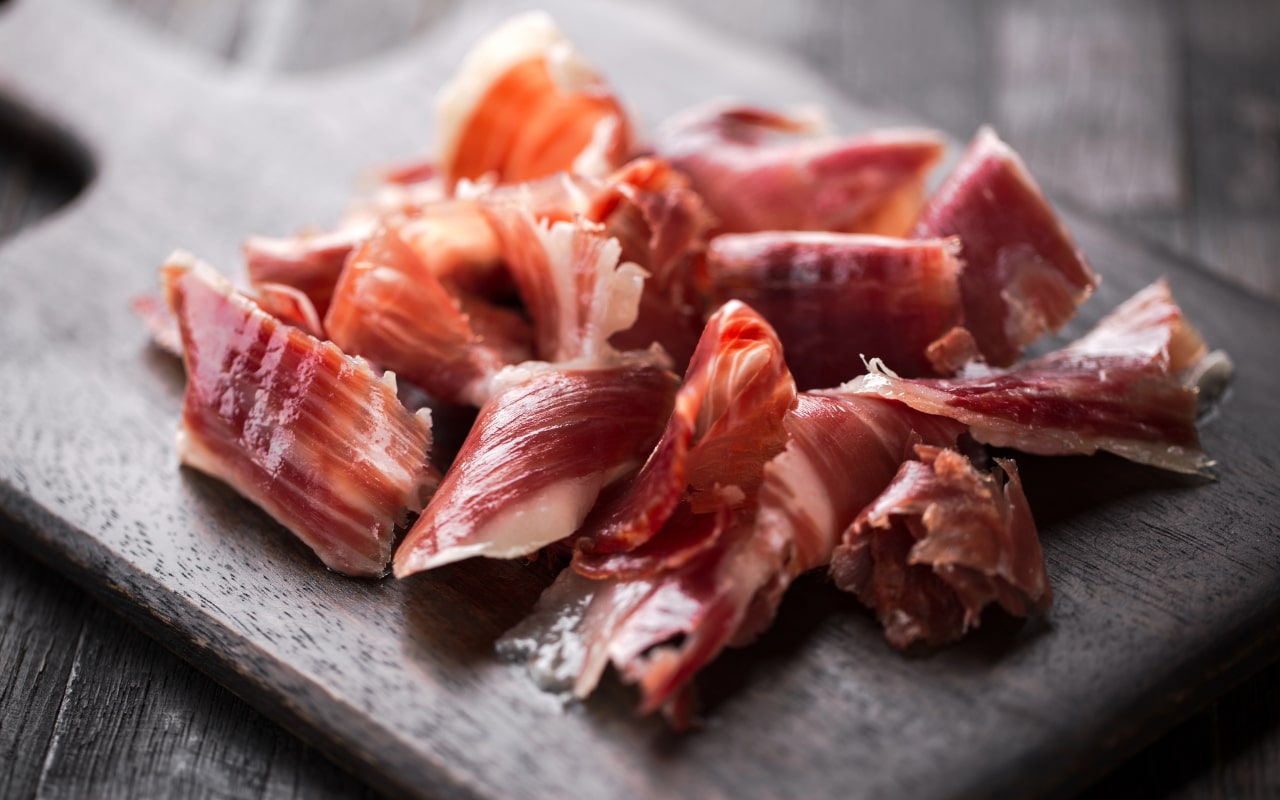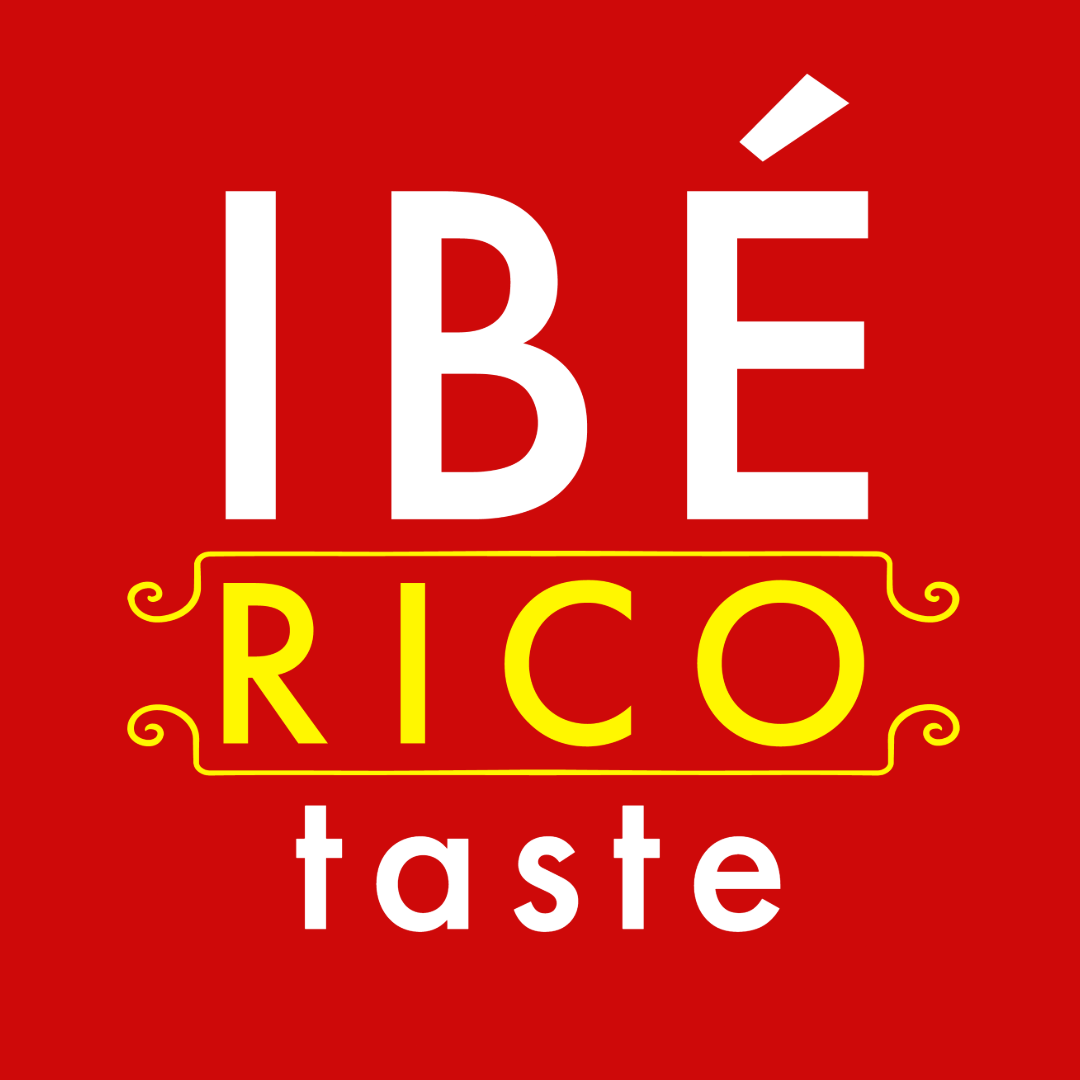
Spanish Ham: A Guide to Jamón Ibérico and Jamón Serrano
by Guillermo Pabon Garcia
on Nov 11, 2024
Spanish ham is one of Spain’s greatest culinary treasures, offering unique flavors and textures. The two main types of Spanish ham are Jamón Ibérico, known for its premium quality and rich taste, and Jamón Serrano, a flavorful and more affordable option. This guide will explore the origins, production, and key differences between these two popular varieties, as well as the brands known for their high-quality Spanish hams.
What is Spanish Ham?
Spanish ham, or jamón, is a cured meat made from the hind leg of a pig. The process of curing ham in Spain dates back centuries and has been perfected to produce the distinct taste that makes Spanish ham a delicacy worldwide. The two main types, Jamón Ibérico and Jamón Serrano, each offer a unique flavor profile based on the breed of the pig, the diet, and the curing process.

What is the Difference Between Ham and Ham Shoulder?
When choosing Spanish ham, you may encounter both ham (jamón) and ham shoulder (paleta). While they come from the same curing process, there are key differences:
Ham (Jamón)
This comes from the hind leg of the pig. It is larger, has more meat, and is typically cured for a longer time (up to 36-48 months for Jamón Ibérico). The flavor is balanced, with a smooth texture that pairs well with its marbling.
Ham Shoulder (Paleta)
The paleta comes from the front leg of the pig. It is smaller, with a slightly more intense flavor due to the higher concentration of fat and its shorter curing time (typically 18-24 months). Paleta is often more affordable but equally delicious, especially for tapas.
Understanding 100% Ibérico Pata Negra vs. 50% Ibérico
Not all Iberico hams are the same. Here’s what differentiates the grades:
Jamón Pata Negra 100% Ibérico
This designation refers to hams made from purebred Iberico pigs, whose lineage is entirely Iberian. These pigs are raised in dehesas and often fed on acorns (Bellota). This is the highest quality available, with a rich, nutty flavor and tender texture. The term “Pata Negra” refers to their characteristic black hooves.
50% Ibérico
These hams come from pigs that are 50% Iberico and 50% a different breed, typically Duroc. While they maintain many qualities of Iberico ham, including marbling and flavor, the taste is slightly less intense. They are a more accessible option for those seeking the Iberico experience at a lower price.
Acorn-Fed (Bellota) vs. Grain-Fed (Cebo)
The diet of the pigs has a significant impact on the flavor, texture, and quality of the ham:
-
Acorn-Fed (Jamón de Bellota): These pigs are free-range, grazing in oak forests where they consume acorns during the montanera season. Acorns give the meat a distinctive nutty flavor and infuse it with healthy fats, particularly oleic acid. Jamón de Bellota is the pinnacle of quality and flavor, often carrying a higher price tag due to its premium nature.
-
Grain-Fed (Jamón de Cebo): Pigs raised for Jamón de Cebo are fed a diet of grains and cereals. While they do not roam freely like Bellota pigs, the resulting ham still offers excellent flavor and is more affordable. The texture is slightly firmer, and the flavor, while less complex, remains a delicious representation of Spanish ham.
Jamón Ibérico: The Gourmet Choice
Jamón Ibérico is made from the Iberico pig, a native breed of the Iberian Peninsula. These pigs have a higher fat content and intramuscular marbling, which contributes to the ham’s rich, buttery flavor. The highest quality Jamón Ibérico, known as Jamón Ibérico de Bellota, comes from pigs that are fed a diet of acorns during the montanera season. This acorn diet gives the ham a nutty, complex flavor.
Free-Range Farming and Diet
Free-range farming is essential for Jamón Ibérico. Iberico pigs roam freely in dehesas, or oak forests, where they forage for acorns. This natural diet enriches their meat with healthy fats, particularly oleic acid, which is also found in olive oil and is known for its cardiovascular benefits.
Unique Aging Process
Jamón Ibérico is cured for up to four years, during which it develops its signature flavor and texture. The slow curing process allows the flavors to deepen, resulting in a ham that is both tender and complex.

Jamón Serrano: A Popular Alternative
Jamón Serrano is made from white pigs, such as Duroc or Landrace breeds, and is known for its accessible price and milder flavor. While it doesn’t have the same level of marbling as Jamón Ibérico, Jamón Serrano is still delicious and offers a traditional Spanish flavor.
Dry Curing and Shorter Aging
Unlike Jamón Ibérico, Jamón Serrano is typically cured for 12 to 18 months. The curing process involves covering the ham in sea salt to remove moisture, followed by aging in a controlled environment. This process gives Jamón Serrano its firm texture and slightly salty taste, making it ideal for everyday use in Spanish dishes and tapas.
Differences Between Jamón Ibérico and Jamón Serrano
- Breed of Pig: Jamón Ibérico comes from Iberico pigs, while Jamón Serrano is from white pigs.
- Diet: Jamón Ibérico de Bellota pigs are acorn-fed, while Jamón Serrano pigs have a grain-based diet.
- Flavor and Texture: Jamón Ibérico has a rich, nutty flavor and tender texture, while Jamón Serrano is milder and firmer.
- Aging: Jamón Ibérico ages for up to four years, while Jamón Serrano is cured for 12-18 months.

Popular Brands of Spanish Ham
Several brands are well-known for producing high-quality Spanish ham, each with its own traditions and specialties.
Cinco Jotas
Cinco Jotas is a prestigious Spanish brand based in Jabugo, known for its 100% Iberico Bellota ham. Since 1879, Cinco Jotas has maintained traditional curing methods to produce an exceptional product with a delicate, nutty flavor.
Covap
Located in the Valley of Los Pedroches, Covap offers a variety of Iberico products. Their emphasis on sustainable farming and animal welfare has earned them a reputation for producing top-quality hams with a well-balanced flavor.
Fermin
Fermin, established in 1956, is known for its strict quality control and artisanal methods. Their hams have a rich, complex flavor and are prized for their melt-in-the-mouth texture.
Beher
Beher is a family-owned company that specializes in Iberico hams. Known for its dedication to quality, Beher produces a range of Iberico hams with a smooth texture and balanced flavors, making it a favorite among ham enthusiasts.
Montaraz
Montaraz is committed to producing traditional Iberico ham using natural, chemical-free processes. Their hams are celebrated for their intense flavor and natural curing methods, making Montaraz a respected name in Spanish ham production.

Health Benefits of Spanish Ham
Spanish ham is not only delicious but also offers health benefits. Both Jamón Ibérico and Jamón Serrano are high in protein and contain healthy fats, particularly oleic acid. These healthy fats can help lower bad cholesterol (LDL) and raise good cholesterol (HDL), promoting heart health. Spanish ham also provides essential vitamins and minerals, including iron and B vitamins.
Comparing to Other Meats
Compared to other meats, Spanish ham has more monounsaturated fats, similar to those in olive oil. It’s high in protein and has fewer saturated fats than many red meats, making it a healthier choice.
How to Enjoy Spanish Ham
Spanish ham can be enjoyed on its own or in various dishes. Here are some simple ways to serve Jamón Ibérico and Jamón Serrano:
Simple Dishes
For a traditional Spanish snack, serve thin slices of ham with crunchy breadsticks or add diced ham to scrambled eggs for a flavorful breakfast.
Gourmet Recipes
Elevate your meal by wrapping ham around asparagus and grilling it or pairing slices of ham with fresh melon and a drizzle of balsamic glaze for a refreshing appetizer.
Identifying Authentic Spanish Ham
When buying Spanish ham, look for labels such as “Denominación de Origen Protegida” (DOP), which certify its authenticity. Reputable brands like Cinco Jotas, Covap, Fermin, Beher, and Montaraz guarantee the quality and origin of their products, providing you with genuine Spanish ham.
Storage Tips
To keep your ham fresh, store unopened ham in a cool, dry place. Once opened, wrap it in wax paper or a breathable cloth to preserve its flavor, and keep it at a consistent temperature of around 50-59°F (10-15°C).

